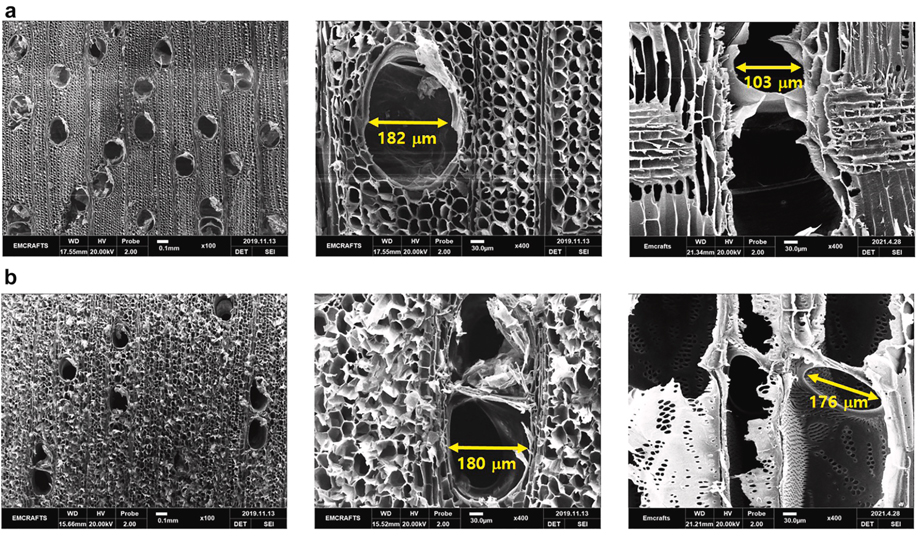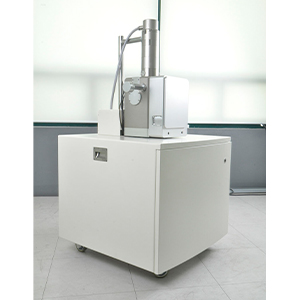Abstract
In this study, the sound absorption coefficient of three low density hardwoods – binuang, balsa and paulownia – were investigated. Their gas permeability and pore size were measured, and their pore shapes were classified into through pore, blind pored, and closed pore, as specified by the International Union of Pure and Applied Chemistry (IUPAC). Among the three species, obvious that paulownia had lowest sound absorption when the two of others showed higher sound absorption. Although paulownia is a high porosity wood, most of its vessels are blocked by tyloses; it is therefore difficult for sound waves to enter its pores, which results in poor sound absorption performance. This study showed that the higher the through pore porosity, the higher was the gas permeability, which led to improvement of the sound absorption performance. It was also found that the sound absorption coefficient of the three species woods increased at low frequencies as the size of an air cavity between the specimens and tube’s wall increased.
Read More: https://www.degruyter.com/document/doi/10.1515/hf-2021-0049/html






